2) Eastern Cordillera of southern Bolivia
Camargo syncline
see Sempere et al. (1997, GSA Bulletin); Horton and DeCelles (2001,
Basin Research); DeCelles and Horton (2003, GSA Bulletin).
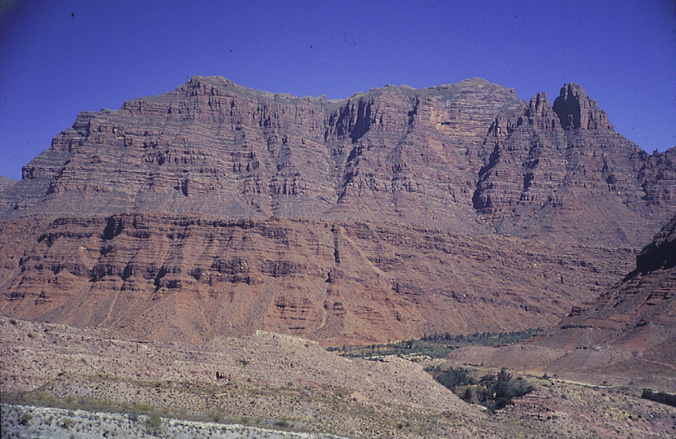
View of massive cliffs of the Camargo syncline. Relief from river
to peak is about 1500 m. The Tertiary stratigraphic section is over
2.5 km thick and consists of an upward-coarsening succession of gray paleosol
siltstones (Impora Fm., lower left), overlying white sandstones (Cayara
Fm.), and a thick section of red sandstone and conglomerate (Camargo Fm.,
cliffs).
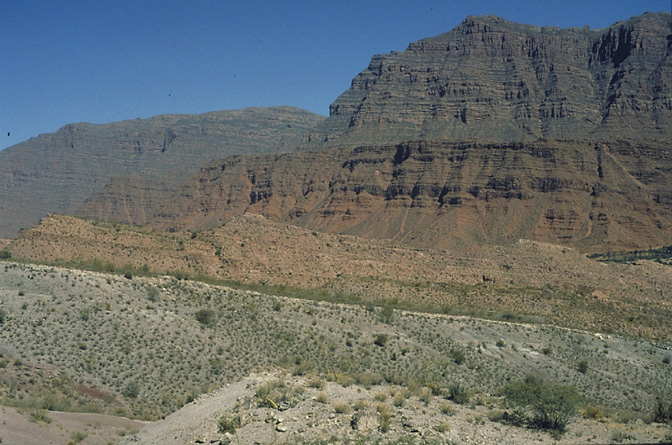
Cliffs of the Camargo syncline. The sandstones and conglomerate
forming the 1500-m-high ridges are laterally continous for tens of kilometers.
These deposits are attributed to deposition in ancient fluvial megafans
(see photos in Modern Foreland
category). Also visible is the upward coarsening succession: gray
Impora Fm., buff Cayara Fm., and red Camargo Fm.
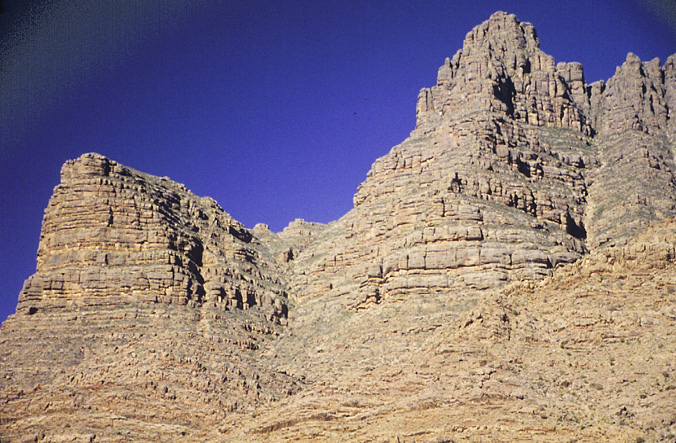
Thick beds of sandy conglomerate (Camargo Fm.) represent channel fills
of ancient fluvial megafans (see photos in Modern
Foreland category).
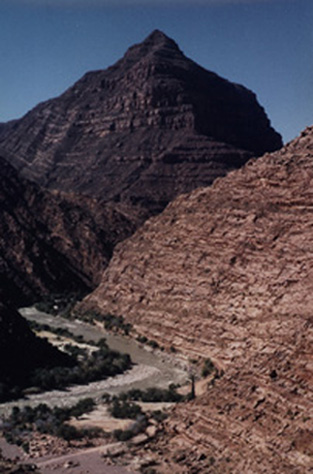
View of west limb of Camargo syncline (Camargo Fm.) Relief from
river (Rio Tumusla) to peak is about 1500 m.
Ticatica region, western Eastern Cordillera, southern Bolivia
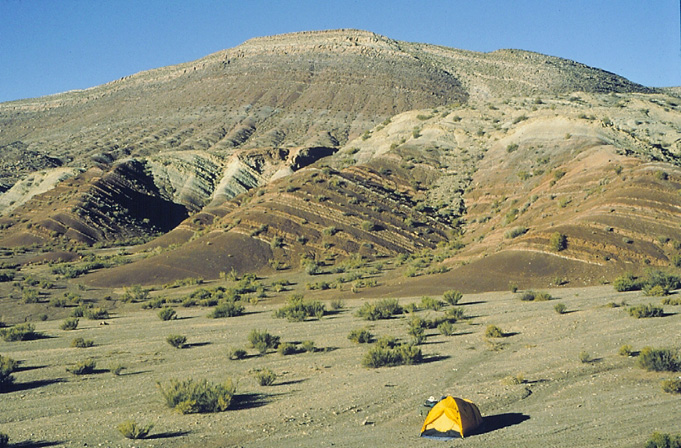
Red Cretaceous strata of the Ticatica region, Eastern Cordillera.
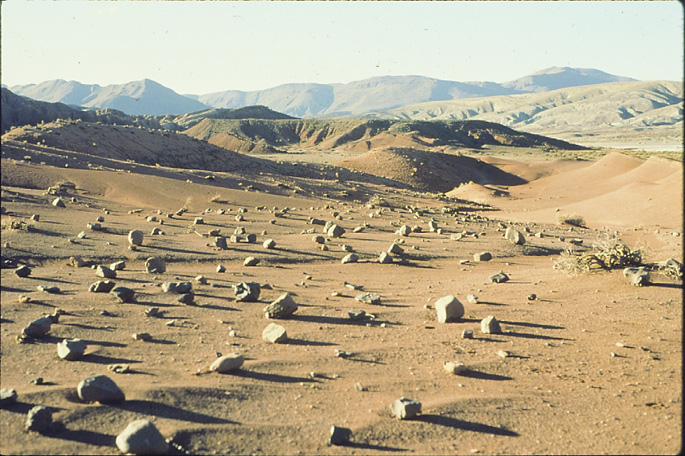
Clasts on mudstone-dominated interval of Cretaceous strata, Ticatica
region, Eastern Cordillera.





